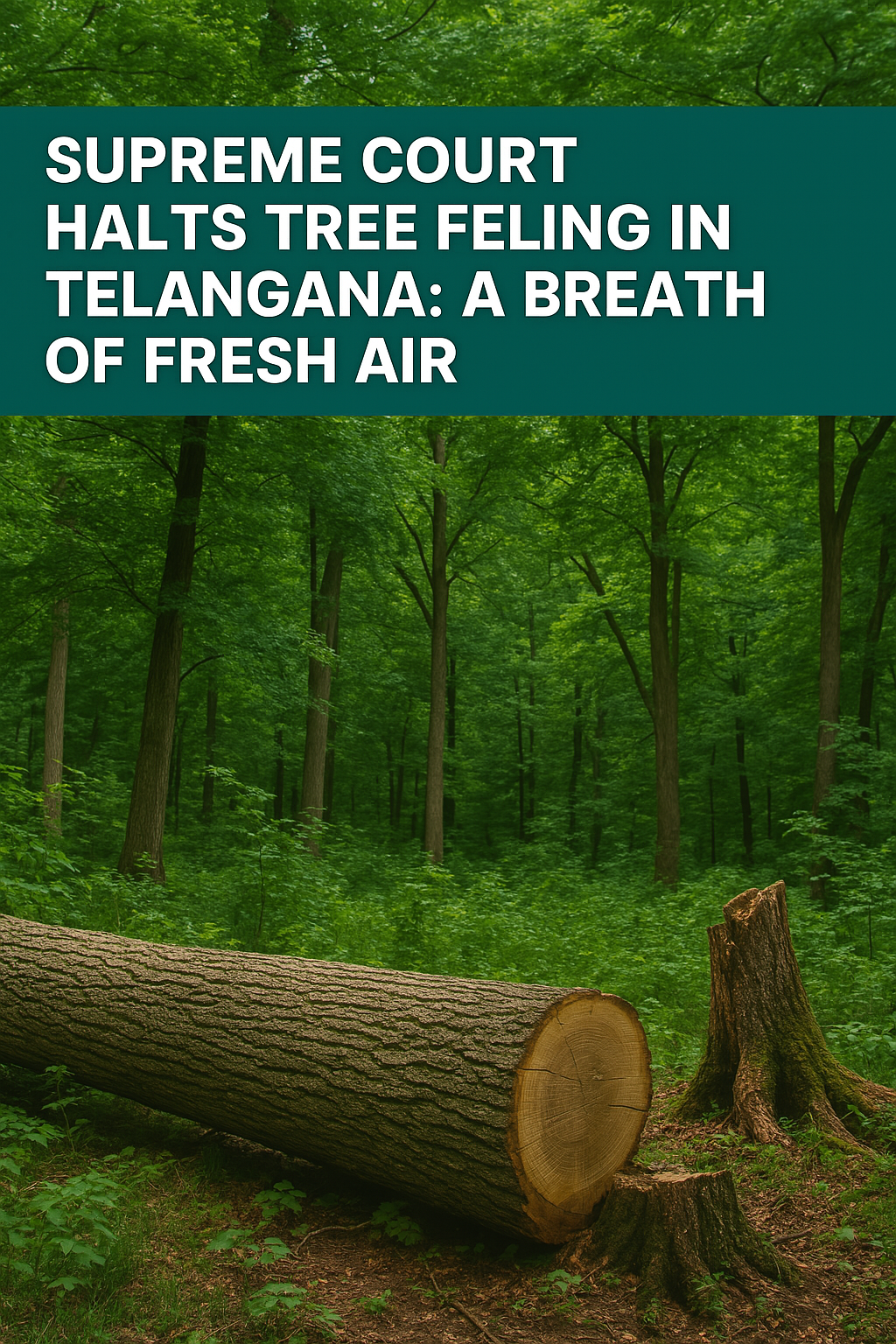Environmental laws at Sierra Leone
Sierra Leone, a West African nation, faces significant environmental challenges, including deforestation, land degradation, pollution, and the effects of climate change. However, the country has taken several steps in recent years to develop and strengthen its legal framework for environmental protection. Sierra Leone's environmental laws aim to protect natural resources, regulate pollution, promote sustainable development, and ensure the country's resilience to environmental hazards.
Here’s an overview of environmental laws and regulations in Sierra Leone:
1. The Environmental Protection Act (2008)
The Environmental Protection Act of 2008 is the cornerstone of environmental law in Sierra Leone. It established the Environmental Protection Agency (EPA), which is responsible for enforcing environmental policies, conducting environmental impact assessments (EIAs), and ensuring the protection of the country's natural resources.
The Act provides the legal framework for regulating pollution, waste management, land use, biodiversity conservation, and sustainable development.
The EPA is tasked with promoting environmental sustainability, conducting public education on environmental issues, and advising the government on policy decisions related to environmental protection.
2. Environmental Impact Assessment (EIA)
The EIA Regulations are a key component of Sierra Leone's environmental laws. Under the Environmental Protection Act, an EIA is required for any project or activity likely to have significant effects on the environment. This includes large-scale infrastructure projects, mining activities, industrial developments, and tourism ventures.
The purpose of the EIA process is to assess the potential environmental impacts of a proposed project and to develop mitigation strategies to minimize those impacts. The EIA process includes public consultations to involve local communities and stakeholders in decision-making.
The EIA Guidelines (2006) issued by the EPA provide more detailed instructions for conducting environmental assessments in Sierra Leone, ensuring that projects adhere to national and international environmental standards.
3. The Forestry Act (1988)
The Forestry Act of 1988 governs the management and conservation of forests in Sierra Leone. The Act provides for the establishment of protected forests and defines regulations for logging, reforestation, and forest management.
The Act also empowers the government to regulate the export of timber and forest products and to combat illegal logging. It is an essential tool for protecting Sierra Leone’s forests, which are critical for biodiversity, climate regulation, and the livelihoods of many communities.
In recent years, there have been efforts to address illegal logging and encourage sustainable forest management practices, especially in light of the significant deforestation that has occurred over the past few decades.
4. The Mines and Minerals Act (2009)
The Mines and Minerals Act (2009) regulates mining activities in Sierra Leone, including the extraction of minerals such as diamonds, gold, bauxite, and rutile. The Act sets out the process for granting mining licenses, ensuring that operators comply with environmental regulations and mitigate the environmental impacts of their operations.
The law requires mining companies to conduct Environmental and Social Impact Assessments (ESIAs) before starting new mining operations. This ensures that mining activities do not cause irreparable damage to ecosystems and that companies implement responsible waste management and land restoration practices.
The Environmental Protection Agency (EPA) plays a role in overseeing the environmental impact of mining operations, with particular focus on water quality, land rehabilitation, and air quality.
5. The National Protected Area Management and Biodiversity Conservation Act (2012)
The National Protected Area Management and Biodiversity Conservation Act of 2012 is focused on the conservation of Sierra Leone's rich biodiversity. This law establishes a framework for creating and managing protected areas (such as national parks, reserves, and wildlife sanctuaries) to conserve wildlife and habitats.
The Act aims to safeguard the country's ecosystems and endangered species, including its coastal and marine resources. It also empowers the government to regulate hunting, fishing, and the collection of biodiversity resources within protected areas.
The Act encourages sustainable tourism practices within protected areas, ensuring that economic benefits do not come at the cost of environmental degradation.
6. Water Resources Management
The Water Resources Management Act (currently under development) is expected to establish a more comprehensive framework for water use, management, and protection in Sierra Leone. Water resources in the country are subject to pressures from population growth, agriculture, mining, and pollution.
Under the Environmental Protection Act, the EPA is tasked with regulating pollution in water bodies and ensuring that water resources are protected from industrial and agricultural runoff, untreated sewage, and other forms of contamination.
The Sierra Leone Water Company (SALWACO) manages water supply and sanitation in urban areas, and the government has made efforts to improve water access, particularly in rural communities.
7. The Public Health Act (1960)
The Public Health Act addresses the impact of environmental factors on public health, particularly in relation to sanitation, waste management, and water pollution. It includes provisions to manage environmental health risks, including vector control, waste disposal, and the prevention of waterborne diseases.
The Act requires that public authorities implement sanitation programs to ensure proper waste disposal and prevent contamination of water sources. This is particularly important in Sierra Leone, where access to clean water and sanitation facilities remains a challenge in many rural areas.
8. The Coastal and Marine Resources Management
The Coastal Zone Management (CZM) plan is intended to guide the sustainable development and protection of Sierra Leone's coastal areas, which are important for local livelihoods, biodiversity, and the economy. The country’s marine resources, including fish stocks, coral reefs, and coastal habitats, are under pressure from overfishing, pollution, and coastal development.
Coastal zone management regulations aim to prevent habitat destruction, promote sustainable fishing practices, and regulate the use of coastal resources for tourism and development projects.
9. Climate Change and Environmental Adaptation
Sierra Leone is highly vulnerable to the impacts of climate change, including sea-level rise, floods, droughts, and extreme weather events. In response, the government has developed national climate change policies aimed at both mitigating the causes of climate change (such as reducing greenhouse gas emissions) and adapting to its effects.
The National Climate Change Adaptation Strategy (NCCAS) is the country’s framework for addressing climate change. It includes measures for improving disaster preparedness, protecting vulnerable communities, promoting climate-resilient agriculture, and managing natural resources sustainably.
Sierra Leone is also a signatory to the Paris Agreement on climate change and is working to align its national climate strategies with international climate goals.
10. The National Environmental and Social Standards
Sierra Leone has developed national environmental and social standards for development projects to ensure that they comply with environmental and social impact regulations. These standards include guidelines for environmental sustainability, resettlement of displaced populations, and the integration of indigenous knowledge into environmental management practices.
The country is committed to international sustainability goals, including the UN Sustainable Development Goals (SDGs), and works to ensure that development projects align with environmental and social safeguards.
Challenges and Opportunities:
Enforcement of Laws: One of the biggest challenges for Sierra Leone is the enforcement of environmental laws. While there are comprehensive laws in place, enforcement can be inconsistent, especially in rural areas. Limited resources and capacity within the Environmental Protection Agency (EPA) and other government institutions also make it difficult to monitor and regulate environmental practices effectively.
Illegal Logging and Mining: Illegal logging and unregulated mining are significant environmental issues in Sierra Leone, contributing to deforestation, land degradation, and water pollution. The government is working to curb these practices, but stronger enforcement and more sustainable alternatives are needed.
Waste Management: Waste management is another challenge in Sierra Leone, particularly in urban areas where improper waste disposal and inadequate infrastructure contribute to environmental pollution. The government is taking steps to improve waste management practices, but more investment in infrastructure and public education is required.
Conclusion:
Sierra Leone has developed a strong legal framework for environmental protection, particularly through the Environmental Protection Act (2008), the Forestry Act (1988), and the National Protected Area Management and Biodiversity Conservation Act (2012). These laws aim to safeguard the country's natural resources, promote sustainable development, and protect its unique biodiversity. However, challenges such as weak enforcement, illegal practices, and inadequate infrastructure remain. Continued investment in capacity-building, public education, and cross-sectoral collaboration is essential for strengthening environmental governance and achieving sustainable development in Sierra Leone.




























0 comments